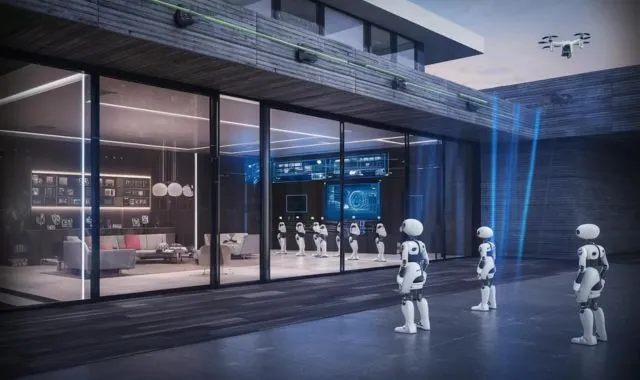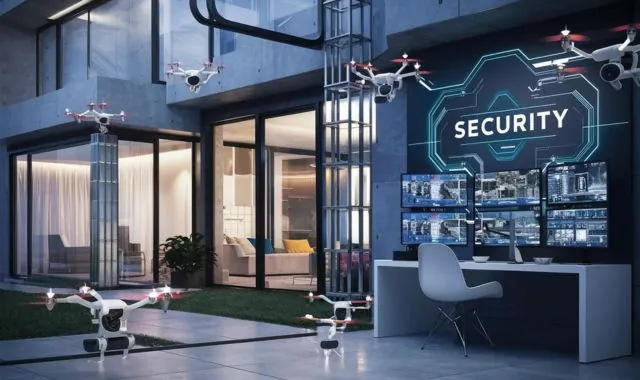Physical Address
304 North Cardinal St.
Dorchester Center, MA 02124
Physical Address
304 North Cardinal St.
Dorchester Center, MA 02124

This article explores the world of security technology, diving into both physical security systems and cybersecurity solutions. It explains the benefits of a layered security approach and offers guidance on choosing the right security measures for your needs. With a glimpse into the future of smart homes and AI-powered threat detection, the article empowers you to build your own Fort Knox in today’s digital age.

In today’s world, security is more important than ever. Whether you’re safeguarding your home, your business, or your digital identity, having the right security technology in place can make all the difference. But with so many options available, it can be overwhelming to know where to start. This comprehensive guide will help you demystify security technology, understand your options, and choose the right solutions for your needs.
Security technology can be broadly divided into two categories: physical security and cybersecurity.
<h3>Physical Security vs. Cybersecurity: Understanding the Two Pillars</h3>
focuses on protecting your physical space and belongings from unauthorized access. This includes things like locks, alarms, and security cameras.
Both physical and cybersecurity are essential for a comprehensive security strategy.
Here are some key physical security systems to consider:
These systems regulate who can enter a particular area using key cards, codes, or even biometric scanners like fingerprints.
These systems use sensors to detect unauthorized entry, such as motion detectors, door and window contacts, and even break-glass sensors.
Security cameras provide visual monitoring of your property, deterring crime and aiding in investigations.
Now, let’s explore some crucial cybersecurity solutions:
These act as a barrier between your computer network and the internet, filtering incoming and outgoing traffic to block malicious attacks.
Antivirus software identifies and neutralizes viruses, malware, and other harmful programs that can steal your data or damage your devices.
Encryption scrambles your data, making it unreadable to anyone who doesn’t have the decryption key. This is essential for protecting sensitive information like financial data or personal records.
MFA adds an extra layer of security by requiring a second verification step, like a code sent to your phone, in addition to your password.

A layered security approach combines different security measures to create a more robust defense system. Here’s what you gain:
A combination of physical and digital security measures discourages potential criminals and hackers.
Layered security helps detect threats quickly, allowing for a faster response and minimizing potential damage.
Knowing you have multiple security measures in place can give you a greater sense of security in your home and online activities.
With so many options, choosing the right security technology can be tricky. Here are some factors to consider:
Identify your vulnerabilities. Are you more concerned about physical break-ins or online scams?
Security solutions range in price. Determine how much you’re comfortable spending.
Choose systems that are easy to use and manage to ensure you’ll maintain your security measures.
Security technology is constantly evolving. Here are some exciting trends to watch:
Smart home systems can integrate various security features like door locks, lights, and cameras for a more unified and automated experience.
AI can analyze data from security systems to identify patterns and predict potential threats before they happen.
Fingerprint scanners, facial recognition, and even iris scanners are becoming increasingly popular for secure access control.

Security technology is no longer limited to high-security facilities. With the right approach, you can create your own Fort Knox, protecting your physical space, your digital assets, and your peace of mind. By understanding your security needs and choosing the right solutions, you can feel confident in your ability to stay safe in an increasingly complex world.
Here are answers to some frequently asked questions about security technology:
A: The cost of a security system can vary widely depending on the type of system, the features you choose, and whether you opt for professional installation. Basic DIY systems can start around $200, while professionally installed systems with monitoring can cost upwards of $2,000.
A: Here are some key practices for online security:
A: Most software programs offer automatic update features. You can usually enable these features in the program’s settings. Additionally, operating systems typically have automatic update functionalities that can be configured.